Welcome to… the Internet
Although XLR8R makes an effort to regularly cover numerous strains of electronic music from around […]
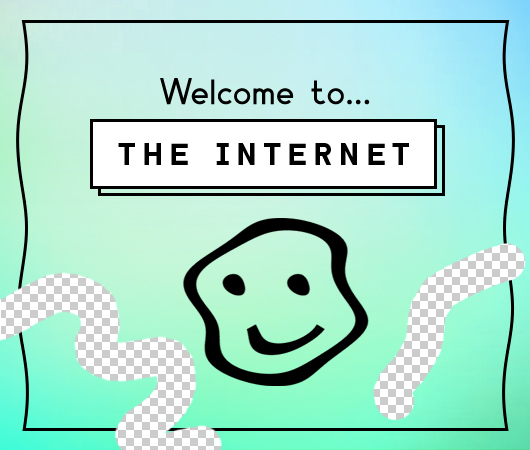
Welcome to… the Internet
Although XLR8R makes an effort to regularly cover numerous strains of electronic music from around […]

Although XLR8R makes an effort to regularly cover numerous strains of electronic music from around the globe, occasionally we recognize the need to take a closer look at a specific scene or musical phenomenon. Welcome to… is a platform to dig deeper into the sounds emanating from a particular locale, even when that locale happens to be more virtual than geographical.
For all the discussion around the internet’s economic impact on music, its aesthetic impact remains harder to grasp. Simon Reynolds’ book Retromania diagnosed a lack of innovation across the board as musicians raid the archives, poaching sounds from other times and endlessly recombining them in variations on a basic “retrolicious” theme. But the past few years have witnessed the development of a more radically decentered aesthetic, one that rejects references to analog culture in favor of the hall-of-mirrors self-referentiality of the internet itself. These artists refer to the past, but through the flattening viewfinder of the web; there’s no longing to return to an earlier time or style because it’s all here, right now—all equally valid and equally LOLworthy. The space away from media-conveying screens that “IRL” once described has collapsed rapidly, to the point where—philosophically at least—there’s no lack, no difference between this and the real world.
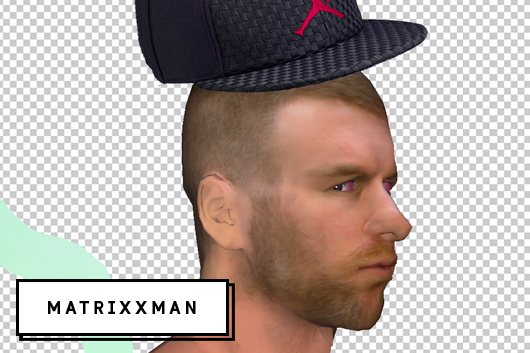
For many of these artists, the internet has gone from a mediating force—giving partial, finite access to the past or the present, but remaining fixated on another world out there, away from the screen—to a closed circuit actively opposed to linear time and hierarchical values. Despite what the design savvy we’re surrounded with on the web may be suggesting, we’re living in an achronological, carnivalesque present, both appalling in its smooth gaudiness and perfectly, reassuringly frictionless. “Some people think it’s willy-nilly,” Charles McCloud Duff (a.k.a. Matrixxman of LA/SF duo 5kinAndBone5) says about the aesthetic. “But there’s actually a carefully curated—for lack of a better word—theme of people trying to integrate with machines, trying to capture this weird, awkward discord.” McCloud makes music with his production partner Paavo Steinkamp, but handles the group’s vigorous online presence singlehandedly. It’s spread out over various platforms—existing most notably on Tumblr—but there’s still a sense of contiguous space: imagine the walls of a surly cyberpunk teen’s bedroom in Second Life, with hentai and corporate logos splashed on the walls. One gets the sense that it might be some kind of elaborate semantic booby trap. Oh, and about all the boobs: it’s knowingly puerile. If there’s nostalgia here, it’s for the internet as libidinal playground, before “content,” “curation,” and other editorial forces came into play—in other words, when the web still felt radically inhuman and isolating.
Photo by Alex Gitman

Physical Therapy (a.k.a. Daniel Fisher) isn’t as deeply enmeshed in this post-ironic visual culture. Nevertheless, his production work communicates a kindred sensibility, a shape-shifting approach to dance music that’s not tied to any particular lineage. It’s hard to get a bead on where the five tracks on Safety Net, his 2012 debut EP for Hippos in Tanks, were coming from. Drum & bass, house, rave, and numberless incidental influences weaved hyperactively throughout it all. “I’m a collagist. I’m a sample-based artist,” says Fisher. “I’m not good at programming drums or engineering kicks. Everything you’re hearing is the product of a lot of trial and error and a lot of cutting and pasting.” For the 24-year-old producer, the internet has only been a boon to getting started as a DJ and producer; indeed, his early DJ sets were comprised of lots of YouTube rips. That kind of quick-and-dirty research has allowed him to feel confident trying his hand at many different styles. “When I started being curious about house music, I just threw myself into it and downloaded everything I could, took in more and more, went from one tangent to another,” he explains. “That’s why my music’s always gone off in a thousand directions. I’m able to get many different things without having to go to a deep-house specialty store or mail order from a hardcore specialty store in Antwerp. I can spend three good months researching and building up my collection for zero dollars, and then be able to incorporate those sounds. And you don’t have to commit to one thing.”
Fisher’s digital-DIY approach is motivated by a punky sense of empowerment, and undoubtedly rubs some music fans the wrong way. One could argue that viewing genres as resources rather than ideas to be explored, challenged, and pushed forward contributes to the general sense of cultural stagnation—an abundance of options coupled with a lack of anything really new. Yet Fisher doesn’t see it that way. “There really isn’t a signature sound for artists like myself, 5kinandbone5, and the former LOL Boys,” he says. “[Every] track just comes from a mood. That’s really hard for people to hold onto, where it’s just a heady muddle of influences. Each Kingdom track sounds different, but you can hear it and know it’s the new Kingdom track. But I think people are growing to accept and want that multitasking ability. Every producer is going to need to produce at every bpm.” While this kind of talk all sounds decidedly future-oriented, Fisher isn’t without his own kind of nostalgia. Rather than longing for the seriousness and craft of hardware over the cost-efficient ease of software, he misses instead house music’s sense of humor, the intense-but-silly vibe of Green Velvet or even Armand van Helden—a golden age when technical details didn’t smother the potential for lightheartedness.
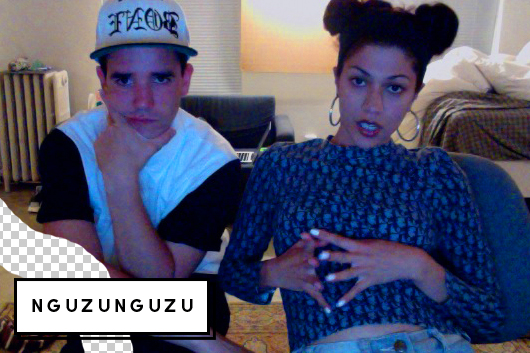
“I feel bad for writers,” says Asma Maroof, one half of LA’s Nguzunguzu. “It’s hard to talk about music.” Along with production/DJ partner Daniel Pineda, Maroof makes classily hybrid club music. The duo doesn’t quite belong to any one scene or tradition, which makes them an easy target for misunderstanding—Nguzunguzu has been lumped in with bass music, tropical/global bass, trap, seapunk, moombahton, and other internet-spawned genres, but Maroof and Pineda are too wily to be held to any single element of their sound. Perhaps more importantly, they aren’t particularly interested in correcting audiences’ perceptions. “We always mixed hip-hop and other kinds of dance music,” Pineda says, “Now it’s thought of like we’re doing this trap thing. But things change really fast and the trap thing will blow over and still stay around in its own way. New things and new headlines will come around.”
As with Physical Therapy, Nguzunguzu would sound very different were it not for the internet. “With Napster, iTunes, or whatever, you can access music that’s already out really quickly,” Maroof says. “But there’s also this whole database of music that isn’t released. When Myspace came out, people could put up music they made and you could message them like, ‘Yo, I love this track, send it to me.’ You could play demo tracks from kids that live in Iceland or whatever. That was really important in helping us find our sound. I wouldn’t say we wouldn’t be doing this without the internet, but I think [our music] wouldn’t sound like it does.” That said, artistry and originality are still key to what Nguzunguzu does. Pineda explains, “You hear something new, and it’s a whole new world, but if you want to produce something just like it [after] having heard one bit of it… I think that seems a little cheap. You’re probably not gonna make something better. If you go down the other path and find out more about it first, you can make something that stands on its own [and] fits into your own sensibility while being inspired by what you discovered.”

Brenmar (a.k.a. Bill Salas), covers similar terrain as Nguzunguzu—as his SoundCloud profile succinctly puts it, he makes “club music for the present.” What this means more practically is that he’s re-establishing a dialogue between dance music proper and hip-hop and R&B, with touches of 2-step’s and UK garage’s urban slinkiness. In truth, Brenmar’s sound is much more consistent than that of many of his internet-savvy peers, but he’s no less wary of straight-laced purism. “Nothing is created out of thin air,” he says, “especially if we’re talking electronic music or dance music particularly. It’s about how you combine it with respect to the source material and with respect to where you’re coming from. I’m not about to say you have no right to flip an Aaliyah sample if you didn’t listen to R&B ’til last year. That could be an easy callout, but it’s also like, ‘Why?’ If you let these little rules get in the way, you could miss out on some great beats… at the end of the day, if it’s dope, it’s dope.”
Salas is bringing up a subtle but obvious point that’s too easily overlooked in the internet’s cycles of quick fame and swift recrimination: the music has its own agenda, regardless of its perceived qualifications. He respects the importance of gatekeepers, people that care about the culture and have a sense of history, but also states, “Nowadays, more than ever, it doesn’t really mean shit. You’re not packing the venue because you use all-analog gear or because you really care about dance music. These purist ideals that we maintain are worthy of holding on to, but we might be in the minority.” There’s truth in what he says, which is why—at least in the lawless realm of the internet—there’s seemingly little value in artists marginalizing themselves by limiting their visibility or policing their engagements. And though it may be easy to criticize the producers with ASCII machine guns on their SoundCloud profiles doing it for for “lulz,” there are also artists homing in on their own obsessions, ultimately arriving at something which at least feels real.
Photo by Dom Smith

The concept of reality certainly comes into play in the music of Fatima Al Qadiri. Her latest EP, Desert Strike, takes its name from the Sega Genesis game subtitled Return to the Gulf. What makes it remarkable is that she grew up in Kuwait during the Gulf War and, like many of her Western peers, was addicted to videogames—an unusually literal example of escapism. “I think the reason so many children become addicted to videogames has to do with agency,” she says. “A lot of kids feel that they’re not participants in this world and its power structures very early on. Videogames allow them [a sense of] control and godlike agency not afforded by society.” Not surprisingly, the music Al Qadiri makes overtly references videogames’ sonic palette, but it’s miles away from cheap and cheerful chiptune, and gleams with an otherworldly precision that evades many of her peers. “The vast majority of electronic-music producers could put videogame soundtracks on their top 10 influences,” she says, stating a fact whose bluntness seems insightful. In recognizing these common cultural sources, she’s wary of defining an essentially amorphous “internet” genre, despite the fact that she serves as the music editor and a columnist for DIS Magazine, a webzine that’s done much to establish the so-called “Tumblr aesthetic.” Al Qadiri explains her hesitance by saying, “It has less to do with the artists embracing some internet aesthetic, and more to do with the reality of the internet invading every part of our lives. Our lives are turning into data management. There’s no way of weighing our present reality against a previous reality, of getting it all in the frame. The fact that we all come from the same generation says everything: it has more to do with the fact that we share the same influences from growing up.” Indeed, trying to pin down a shape-shifting aesthetic is a somewhat impossible task.
Yet even without a fixed definition of exactly what all of this music is, internet-fueled sounds have repeatedly run into trouble when it comes to issues of race and class. As much as the internet is part of a process of restructuring time, space, and cultural distinctions, the web still has a divergent tendency to both flatten and exaggerate our differences. The sounds of juke/footwork, trap, and ballroom/vogue house have all ascended to a place of greater prominence within the greater electronic spectrum in recent years, and though there’s a compelling strangeness to music that’s developed in America’s marginalized communities, these genres have also proven to be extremely exploitable by internet-ferried newcomers. Trap—a memeified name for tightly coiled Southern hip-hop of the Lex Luger variety, first imported into web-magazine news cycles by Salem and reaching a gruesome apotheosis last year with Purity Ring—in particular has seen the most intense metastasis since dubstep. As with footwork before it, a deluge of simplified takes on its signature sounds are issuing forth from YouTube and SoundCloud at a remarkable clip. And for every effort that innovates with these sounds while engaging them respectfully, there are a grip of swagger jackers trading in a form of the music that—either by design or simply due to ignorance—doesn’t confront the listener with the bleak disparities of American life in quite the same way, making for an oddly frictionless pantomime.
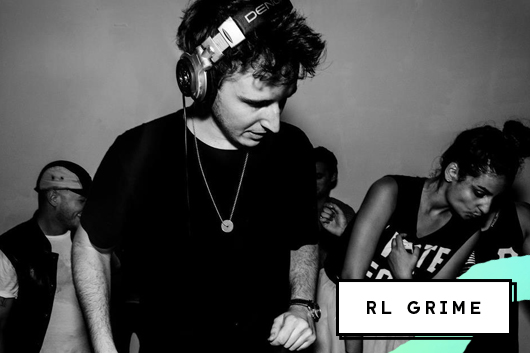
At the same time, it seems obvious that producers should be drawing connections between dance and hip-hop. After all, many producers are simply trying to connect the dots between hip-hop’s pop domination during their childhoods and the current fractal landscape of niche interests. “For me, rap music was such an important part of growing up, and I’m sure other people from my generation would echo that sentiment,” says RL Grime (a.k.a. Henry Steinway), the 21-year-old producer whose “Trap on Acid” coincided with the term’s explosion. “The rise of dance music from 2008 to the present sort of switched gears for a lot of people, including myself,” he continues. “I started going to shows and festivals primarily to see dance-music acts. I think now, the resurgence of rap within dance music was exactly what people wanted.” He admits having “super mixed feelings” about the word “trap,” recognizing its usefulness on the one hand while admitting that, for him, “all serious connotations [of the term] have been thrown out the window… it’s the artists that are trying something new that stand out to me.”
Ballroom or vogue house, on the other hand, seems tougher to put a finger on sonically. Most likely this is because the music is just one element in the rich, long tradition of competitive New York drag—itself no stranger to mainstream appropriation, most notably by Madonna. MikeQ (a.k.a. Michael Cox)—a prolific producer and busy DJ who’s one of the the most visible proponents of the ballroom/vogue sound—tries to explain what makes it unique: “[Songs like Masters at Work’s] ‘The Ha Dance,’ among others, are extensively remixed tracks we use here in ballroom, but you can’t just take these songs or sounds and think that what you are creating is ballroom when in reality it’s just a remix of that song.” He goes on, “I still cannot 100% pinpoint what it is about the sound of ballroom that makes it what it is. But there is a sound—you have to be able to vogue and walk runway to this music, and it can’t just be anything. Lately people are making what they think is vogue or vogue-inspired music, and it’s all wrong—it’s simply remixing the ‘Ha’ or adding some gay voice to a track [without] knowing what you are doing.” That said, MikeQ can name an impressive roll call of celebrities that have borrowed from voguing and ball culture, and has no problem with it. “It’s almost like paying homage or giving us our life,” he says, referring to Beyoncé, Missy Elliott, Rihanna, and many others who have borrowed from the dance, fashion, language, or other aspects of ball culture. The distinction, for him, seems to be between someone making a career on the back of an underground culture they may not understand versus established artists who are paying homage to a marginalized, outrageously creative scene.
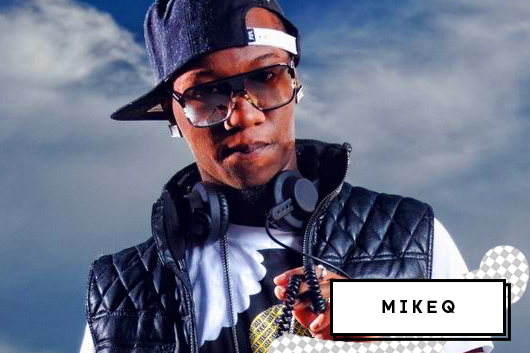
The internet revels in its self-referentiality and frivolity, punctuating its endless reproduction of memes with bathos, an awareness of its own triteness that makes the entertainment value go down easier. Wallowing in GIFs is never far from worrying about that wallowing, as evidenced by whatever the most recent New York Times op-ed describing how its author learned to “unplug” happens to be. Still, having reached this volume of cultural production and consumption, it’s unlikely that we’ll take a step back and spare ourselves from premature jadedness. It goes without saying that shallowness and lack of a sense of history affects not just the music itself, but the whole culture and industry around it, criticism included. Nevertheless, this leaves today’s artists in a place where the only critically sure bet at this point is also a safe one: sticking to vinyl while keeping it in the wheelhouse of techno or house—acting, in other words, as if the internet hadn’t happened. With each passing year, that becomes a more daunting proposition, particularly for younger artists, many of whom lack that vestigial web 2.0 anxiety.
Yet this doesn’t mean that the integrity of electronic music is doomed; artistic methodologies may be evolving, but it’s not like the music world—and the artists themselves—aren’t thinking about the issues. When speaking to the various musicians for this piece, many of the problematic dynamics we asked them to comment upon didn’t seem quite as urgent or intractable when transplanted from the hothouse environment of Twitter and comments-section flame wars. Opportunistic music will of course always exist, and is bound to flourish when the costs of production, distribution, and promotion are close to zero. And when we barely have the time or attention span to really absorb the music we actually like, it’s even more tiresome to encounter lifeless music. But the only prospect more depressing than wading through the morass of sceney, less-than-half-baked, trend-hopping tunes is trying to articulate rules that would keep the dross from getting made in the first place or, at least, making its way into your field of vision. After all, the glut of bullshit hasn’t deterred audiences’ hunger for “new” content. From musicians to the editors and critics that put them on blast, everyone’s growing up in public. Appropriation and dilettantism are serious and dispiriting issues, and their persistence partly confirms our distance from the utopian, transhuman future many of these internet-oriented acts have conjured—a future we just might long for unironically.

